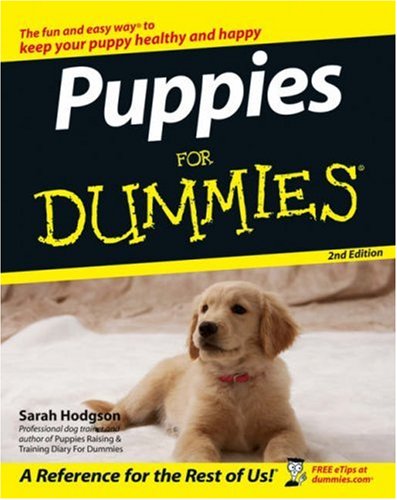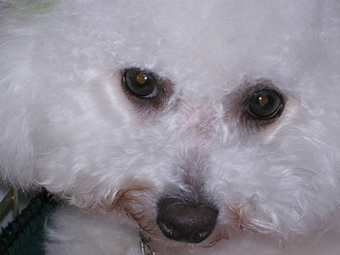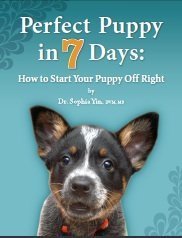
Since their domestication about 12000 years ago, dogs have been selected and bred for a wide variety of traits and characteristics. We have bred them for size, appearance, temperament, skill, and performance. Many of these traits that we have selected for are actually genetic defects or mutations that in the natural environment would likely have resulted in the demise of the individual. With human intervention not only are these animals able to survive, but with careful and deliberate selective breeding they are even able to flourish into a new breed. A good example of this is dogs with achondroplasia, the proper term for the genetic defect that causes dwarfism. Although short, slightly crooked legs are not a good asset in the wild; dogs with shorter stature are good for running down fox holes. This makes them a very handy asset for hunters who were quick to recognize the usefulness of this trait. This led to the artificial selection of a whole host of smaller stature dog breeds.
The most famous short legged breed is the Dachshund, known affectionately as the ‘Weiner dog’ to most. Unfortunately, in selecting for dogs with achondroplasia and a long back, like the Dachshund, we have selected for a genetic defect that causes serious and debilitating health concerns for the breed. Dachshunds have a high frequency of slipped discs and back problems as well as bone deformity issues in the legs. Other problems associated with anchondroplastic breeds, such as Chihuahuas and Yorkshire terriers, are hydrocephaly (accumulation of fluid on the brain), paraplegia (back leg paralysis), and aggression. The opposite of short stature (achondroplasia) breeds are the giant (acromegaly) breeds, such as Great Danes, Irish Wolfhounds, and St. Bernards’. These breeds have a high susceptibility to hip and elbow dysplasia which cause crippling lameness and arthritis.
There are many more examples of dog breeds that have been selected for a particular trait that in itself causes health problems for the individuals of that breed. Dog breeds with a shortened snout (brachygnathia) such as bulldogs, boxers, and pugs to name a few, have trouble breathing because of their squashed in faces and narrow nostrils. Other breeds have been engineered to have extremely long snouts (dolicocephaly), like collies, borzois, and shelties. Smaller than normal sized eyes have come along with elongated snouts and the collie breed in particular is severely afflicted with a genetic disorder referred to as collie eye anomaly, a direct result of purposefully selecting for a longer snout. Collie eye anomaly has a wide range of severities and symptoms, causes blindness in severe cases, and has a suspected incidence of 95% in collies. That means that 95% of all of the collies that we breed will be afflicted with collie eye anomaly to some degree.
Another unusual trait that was selected for is loose, wrinkly skin. This trait, called dermatosparaxis, is seen in Bloodhounds and Shar Peis and is actually a genetic disorder of the connective tissue that holds the skin to the rest of the underlying tissue. While the loose skin on the face of a Bloodhound makes it a supreme tracker and scent dog it also makes them more prone to skin infections. The drooping eyelids and red eyes which are also a characteristic of this breed are also a source of trouble and discomfort. The red eyed look of Bloodhounds is actually caused by the inward rolling (entropion) of the lower eyelid which causes rubbing and irritation on the cornea of the eye. Shar Peis are particularly susceptible to entropion, as well as all the other health concerns that come along with loose, wrinkly skin.
Dalmatians are perhaps the most severely affected of all the dog breeds. The Dalmatian coat colour is genetically linked to deafness, cataracts, and eczema. Dalmatians are also extremely susceptible to kidney, bladder, and urinary tract stones, as well as arthritis. Although the former disorders are directly related to the trait that we selected for when breeding Dalmatians, the latter are chance anomalies that have become associated with this breed by accident.
Most of the breeds that are in existence today are afflicted by one or many genetic disorders. Many of these problems are directly related to the traits that we purposefully selected for when ‘designing’ these breeds. As a result, many individuals in these breeds require special foods, regular antibiotic treatment, surgery, and medication to lead a comfortable life. This begs the question, have we selected the unfit and created misfits? Although, there are very few wild dog breeds still alive in the world today, those that are do not exhibit the host of problems that we see in domesticated dog breeds. That is because natural selection eliminates the occurrence of these anomalies if it makes the individual unfit to survive in the wild. It is human intervention alone that allows these extremes in artificial selection to persist and flourish.
This is not to say that we should turn our backs on the lovely breeds that we enjoy today. A squishy faced pug is adorable and makes a great pet while Bloodhounds are invaluable for search and rescue. We should, however, take a moment to stop and ponder the situation we have created for ourselves and realize that we have a huge responsibility and obligation to maintain the integrity of these breeds. We need to ensure that we breed responsibly to reduce the occurrence or severity of these genetic disorders.
There are many excellent breeders that take the time and care to breed only sound individuals. Make sure when you are deciding to get a pet that you take the time to research the various dog breeds to learn about their health concerns. Do not make a spontaneous decision. Owning a dog is a huge responsibility and should not be taken lightly. When you finally decide on the breed that is right for your lifestyle you should take the time to find a respectable and reputable breeder. Do not purchase puppies from pet stores unless you know where they are coming from. Puppy mills are still in existence today and supply a lot of pet franchises with unhealthy and poorly bred to inbred puppies of all breeds. Finally, leave the breeding to the breeders! Be a responsible pet owner and have your pets spayed or neutered to reduce the occurrence of unsound and unhealthy puppies.
By Melanie Youngs – Pets.ca writer
 Top 5 Tips to Potty Training a Puppy
Credit: Erin Patterson via Flickr
Top 5 Tips to Potty Training a Puppy
Credit: Erin Patterson via Flickr
 Ten Most Popular Dogs in America for 2012
Wanna Join My Puppy Pile?
Credit: coa
Ten Most Popular Dogs in America for 2012
Wanna Join My Puppy Pile?
Credit: coa
 Top 10 Dogs for Apartment Living - Ten dog breeds that do well in apartments
The Top 10 Dogs for Apartment Living
“What dog will d
Top 10 Dogs for Apartment Living - Ten dog breeds that do well in apartments
The Top 10 Dogs for Apartment Living
“What dog will d
 What Is My Dog Really Thinking?
Scientific Proof The proof i
What Is My Dog Really Thinking?
Scientific Proof The proof i
 Commercial or Raw BARF Diet for Dogs?
Commercial or Raw meat (BARF) diet for dogsIs commercial or
Commercial or Raw BARF Diet for Dogs?
Commercial or Raw meat (BARF) diet for dogsIs commercial or
Copyright © 2005-2016 Pet Information All Rights Reserved
Contact us: www162date@outlook.com